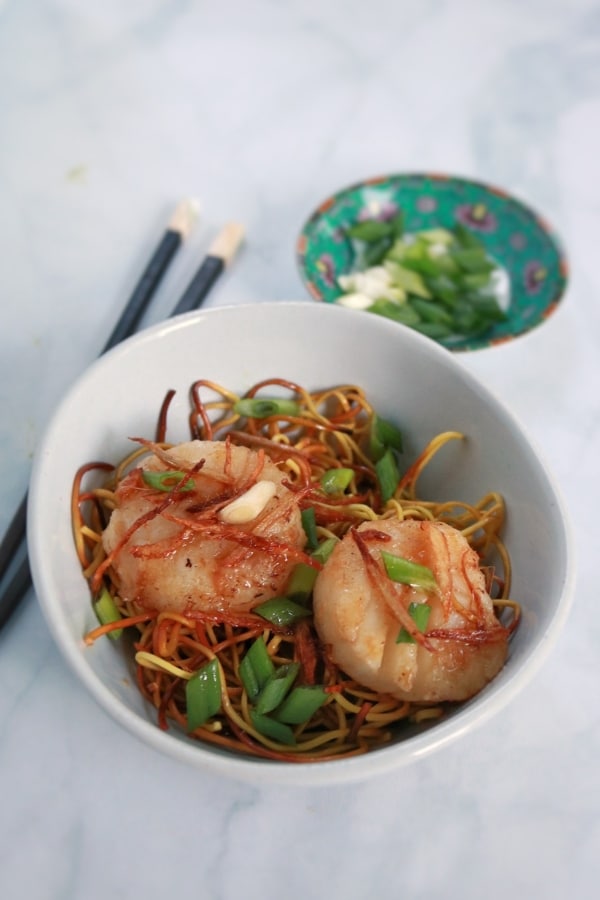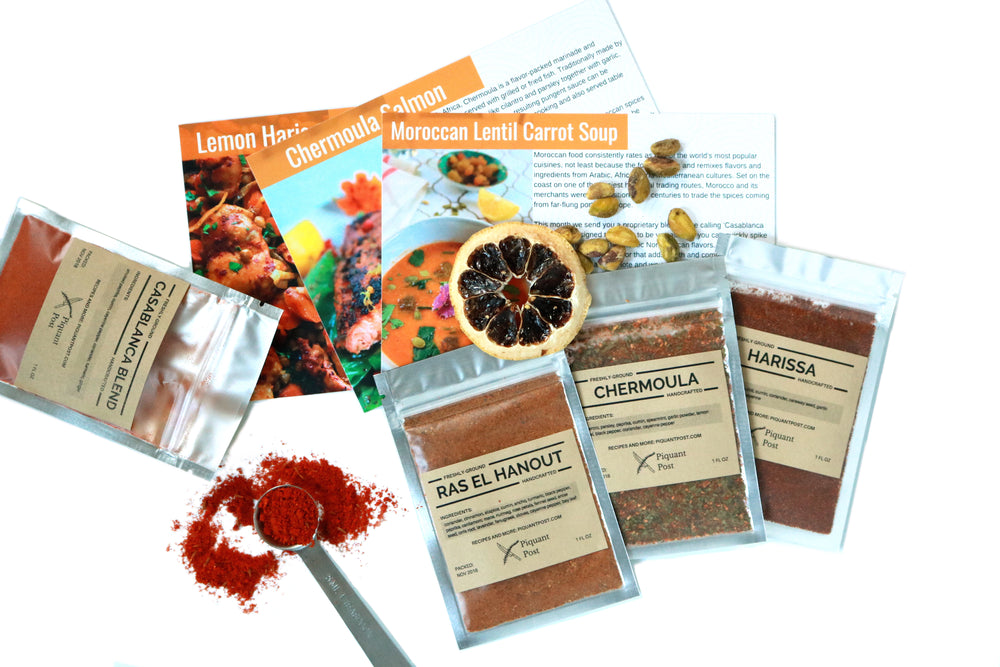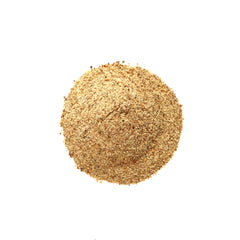Recipes
Hong Kong Scallops with Ginger and Soy

Serves 4
| Prep Time: 10 mins
| Cook Time: 15 mins
| Total Time: 25 mins
You may need: Chinese Salt & 2 Pepper

Discover The Recipe
Food symbolism is incredibly important in Chinese culture. The look of the food and sound of words often represent important themes like family, luck, wealth, and health. As we enter the Lunar New Year holiday in China, this symbolism takes on even more importance for the year ahead. Our recipe for Hong Kong Scallops with ginger and soy attempts to offer positive symbols for the new year. Seafood is considered lucky; Scallops' round shape means 'togetherness' and the scallop also represents 'new opportunities', while the uncut, long noodles symbolize 'longevity'.
In a few minutes, you can make an authentic dish that will bring you smiles AND good fortune. This dish is finished with a simple, powerful blend we call 'Chinese Salt & 2 Pepper'. The key ingredient is Sichuan Peppercorn, the fruit husk of an aromatic Chinese shrub. Not related to peppercorns or chili peppers, it's actually a member of the citrus family. With a slight lemony taste, its primary action on the taste bud is a tingling sensation that may be new to the Western palate. Sichuan pepper is an essential ingredient in many Chinese dishes and adds a delightful taste. If you don't like scallops, try our 'Salt & 2 Pepper Shrimp' recipe use this versatile blend on meat, rice dishes, stir-fries, or soup. We list other ideas at the bottom of this recipe.
Ingredients
1 package (~5oz) "chow mein" noodles, or equivalent amount of ramen, or spaghetti
1 Tbsp oil (grapeseed, avocado, canola, or olive)
1/2 cup water
6-8 (~1 lb) large scallops
1 Tbsp corn starch
3 inch "knob" of fresh ginger, peeled & julienned into matchstick sized pieces
2 Tbsp oil (grapeseed, avocado, canola, or olive)
2 scallions, chopped diagonally
1 tsp Piquant Post Salt & 2 Pepper blend (plus more to taste)
2 Tbsp (low sodium) soy sauce
1 Tbsp sugar (optional)
2 Tbsp of water
1/2 tsp sesame oil
1 Tbsp of oyster or hoisin sauce
Notes
For this recipe, you'll want to try to find chow-mein noodles (click link for an example). These are the uncooked noodles used in authentic stir fry dishes and come packaged in long, uncut strands looking almost like a "birdsnest" arrangement. They're not the fried crunchy toppings that you might find in a round can.
If you're using spaghetti noodles, you'll want to slightly undercook them when boiling (al dente style or even firmer). They should soften but still have a slight chew. They'll finish nicely when stir-fried.
When cooking this dish, take care not to burn the noodles. You want to gently stir fry them in oil to turn golden or even light brown, but an extra minute of unattended cooking on a wok can quickly turn these black! Keep a close eye on them.
One trick to flipping the noodles in the wok is to use a dinner plate in one hand and gently tip the wok to slide the noodle "mat" out on the plate. Then flip it with tongs on the plate and slide back into the wok. Take care not to burn yourself with hot oil.
Ideally, use a higher temp-friendly oil like grapeseed, canola, or avocado. If you use olive oil, turn down the heat slightly so oil doesn't smoke.
Scallops cook very quickly and you don't want them to turn hard and rubbery. We suggest you purchase large, fresh sea scallops and closely watch cooking time. Have your seafood counter select scallops that are intact (not split in half from sloppy processing). This helps keep the juice inside.
Optional ingredients add a little character and flavor but don't sweat it if you don't have them.
Instructions
Rinse scallops & pat dry. Add scallops & corn starch to a medium bowl. Gently mix with hands until corn starch coats scallops. Set aside. Prep ginger and scallions. Then, in a separate bowl, make the sauce by whisking ingredients under "Sauce".
If using chow mein noodles: Heat a wok or large skillet on Med and add 1 tbsp of oil. When pan is hot, place the uncooked "mat" of noodles in the pan & fry for ~2 mins. Use a spatula to move to a plate, then flip noodles back in pan & fry ~2 mins. Then, add 1/2 cup water and use spatula to gently begin to separate noodles. Water should steam & evaporate, slightly softening noodles. They will be golden & mostly crunchy. Remove & set aside.
If using ramen or spaghetti noodles: Boil water & cook enough noodles for your party according to directions, removing when "al dente" (or slightly chewy). Heat a wok or large skillet on Med and add 2 tbsp of oil. Fry the noodles 2-3 mins or until golden on 1 side. Gently flip noodles and fry until golden on the other side ~2-3 mins. Remove & set aside.
Add 2 tbsp of oil to pan on Med heat. Add ginger and fry for 1-2 mins until golden. Remove & set aside. Using same oil, add scallops. Cook for ~3 mins per side, until just golden. Add sauce to pan and cook for 30 secs. Remove from heat.
Place noodles in shallow bowls. Top with scallops and a some sauce from wok. Sprinkle 1/2 tsp Salt & 2 Pepper blend over each bowl to season. Our spice blend acts as a delightful finishing salt in this dish so adjust to your taste. Garnish with scallions and crispy ginger.
Alternatives & Substitutions
We give you enough salt and 2 pepper blend to use in other recipes. Its a versatile seasoning and works great as a finishing salt on just about anything where you want an exotic twist!
Try this blend in any stir-fries, soups, stews, and on meats, fish, and even roasted veggies.
If you like salt and pepper calamari or shrimp, try making our Salt and 2 Pepper Shrimp recipe.
Use the Salt and 2 pepper blend to make a Chinese comfort food: Chicken Congee (Chinese rice porridge). Or, try making an exotic Sichuan pepper burger with garlic and ginger mayo! Use 1 tsp of salt and 2 pepper blend and 1 tsp of our Chinese Five Spice blend in place of all the listed spices. We love our recipe for Chinese Salt & Pepper Ribs!
Ready to make an authentic Chinese classic? Try this Mapo Tofu recipe. You can find the authentic Chinese ingredients (like fermented bean paste and Shaoxing wine) on Amazon. Or you can substitute in easier to find ingredients as needed. Use our salt and 2 pepper blend in place of the salt and Sichuan pepper. You won't add as much of our blend as the Sichuan pepper called for otherwise the dish will be too salty. Just add 1 tsp at a time until it reaches your desired seasoning level.
Vegetarians, try our Vegan Dan Dan Noodles recipe! Or try a vegetarian Mapo Tofu recipe or this Sichuan-style asparagus and tofu recipe. Or try Silken Tofu with Cilantro and Celery salad. Again, just use our salt and 2 pepper blend as a finishing salt or to your taste in the dish.
Don’t forget to leave comments and feedback on your meals and experiments in the comments for others to read.
Post pictures of your masterpiece meal on social media and tag us. We repost!
Hong Kong Scallops with Ginger and Soy
Serves
4
Prep Time
10 mins
Cook Time
15 mins
Total Time
25 mins
Piquant Post spice you'll need: Chinese Salt & 2 Pepper

Ingredients
1 package (~5oz) "chow mein" noodles, or equivalent amount of ramen, or spaghetti
1 Tbsp oil (grapeseed, avocado, canola, or olive)
1/2 cup water
6-8 (~1 lb) large scallops
1 Tbsp corn starch
3 inch "knob" of fresh ginger, peeled & julienned into matchstick sized pieces
2 Tbsp oil (grapeseed, avocado, canola, or olive)
2 scallions, chopped diagonally
1 tsp Piquant Post Salt & 2 Pepper blend (plus more to taste)
2 Tbsp (low sodium) soy sauce
1 Tbsp sugar (optional)
2 Tbsp of water
1/2 tsp sesame oil
1 Tbsp of oyster or hoisin sauce
Instructions
Rinse scallops & pat dry. Add scallops & corn starch to a medium bowl. Gently mix with hands until corn starch coats scallops. Set aside. Prep ginger and scallions. Then, in a separate bowl, make the sauce by whisking ingredients under "Sauce".
If using chow mein noodles: Heat a wok or large skillet on Med and add 1 tbsp of oil. When pan is hot, place the uncooked "mat" of noodles in the pan & fry for ~2 mins. Use a spatula to move to a plate, then flip noodles back in pan & fry ~2 mins. Then, add 1/2 cup water and use spatula to gently begin to separate noodles. Water should steam & evaporate, slightly softening noodles. They will be golden & mostly crunchy. Remove & set aside.
If using ramen or spaghetti noodles: Boil water & cook enough noodles for your party according to directions, removing when "al dente" (or slightly chewy). Heat a wok or large skillet on Med and add 2 tbsp of oil. Fry the noodles 2-3 mins or until golden on 1 side. Gently flip noodles and fry until golden on the other side ~2-3 mins. Remove & set aside.
Add 2 tbsp of oil to pan on Med heat. Add ginger and fry for 1-2 mins until golden. Remove & set aside. Using same oil, add scallops. Cook for ~3 mins per side, until just golden. Add sauce to pan and cook for 30 secs. Remove from heat.
Place noodles in shallow bowls. Top with scallops and a some sauce from wok. Sprinkle 1/2 tsp Salt & 2 Pepper blend over each bowl to season. Our spice blend acts as a delightful finishing salt in this dish so adjust to your taste. Garnish with scallions and crispy ginger.
Notes
For this recipe, you'll want to try to find chow-mein noodles (click link for an example). These are the uncooked noodles used in authentic stir fry dishes and come packaged in long, uncut strands looking almost like a "birdsnest" arrangement. They're not the fried crunchy toppings that you might find in a round can.
If you're using spaghetti noodles, you'll want to slightly undercook them when boiling (al dente style or even firmer). They should soften but still have a slight chew. They'll finish nicely when stir-fried.
When cooking this dish, take care not to burn the noodles. You want to gently stir fry them in oil to turn golden or even light brown, but an extra minute of unattended cooking on a wok can quickly turn these black! Keep a close eye on them.
One trick to flipping the noodles in the wok is to use a dinner plate in one hand and gently tip the wok to slide the noodle "mat" out on the plate. Then flip it with tongs on the plate and slide back into the wok. Take care not to burn yourself with hot oil.
Ideally, use a higher temp-friendly oil like grapeseed, canola, or avocado. If you use olive oil, turn down the heat slightly so oil doesn't smoke.
Scallops cook very quickly and you don't want them to turn hard and rubbery. We suggest you purchase large, fresh sea scallops and closely watch cooking time. Have your seafood counter select scallops that are intact (not split in half from sloppy processing). This helps keep the juice inside.
Optional ingredients add a little character and flavor but don't sweat it if you don't have them.





